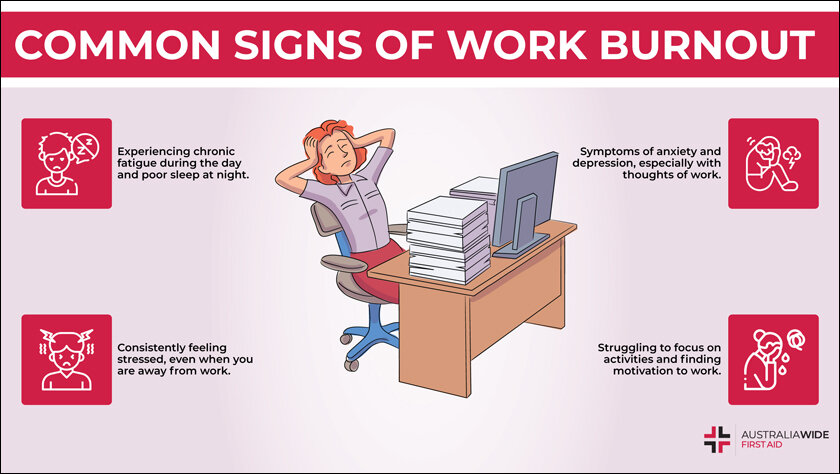Remote work’s digital shift has unveiled burnout’s prevalence. Adarsh explores how mental health can foster a resilient online workforce.
Priyanka, a marketing manager, has been working extended hours ever since her job switched to remote mode. It has blurred the lines between work and personal life, leading to chronic fatigue and heightened stress levels.
Arjun, an IT support specialist, interacts with over a hundred people daily, attending to their technical issues remotely. But he still experiences feelings of isolation and loneliness as remote work limits social interactions, causing increased feelings of disconnection and impacting his mental well-being.

Raj, a software developer, has been dealing with increased screen time, resulting in digital fatigue, eye strain and high stress levels.
Anaya, a finance executive, also a single mother, has been struggling to balance household responsibilities with work commitments, finding it challenging to create a structured work routine, causing increased stress and anxiety.
Welcome to today’s remote working digital landscape, a state of complete chaos replete with physical, mental and emotional exhaustion due to chronic workplace stress.
This burnout is the result of prolonged exposure to high stress levels, often triggered by overwhelming workloads, blurred boundaries between work and personal life and a lack of disconnection from digital devices.

What the Studies Reveal
In a survey by Buffer, 20% of remote workers cited loneliness as their biggest struggle while 18% mentioned collaborating and communication challenges.
Another study by the Society for Human Resource Management (SHRM) revealed that remote workers logged an average of 3 additional hours per day on work-related tasks compared to pre-pandemic levels, leading to heightened stress and burnout.
A recent FlexJobs survey found that 75% of remote workers experienced burnout, with 40% attributing it to an inability to unplug from work, indicating challenges in maintaining work-life boundaries.

Signs & Symptoms of Burnout
Identifying burnout is essential in today’s digital work landscape. Signs include chronic fatigue, a persistent sense of exhaustion despite adequate rest, reduced productivity and a lack of enthusiasm or efficiency at work. Feelings of detachment or cynicism towards work tasks become prevalent, accompanied by increased irritability or anxiety when dealing with work-related matters.
The repercussions of burnout extend far beyond the confines of the workplace. Remote professionals experiencing burnout often find themselves battling higher instances of anxiety, characterized by constant worry or restlessness, and feelings of depression, manifesting as persistent sadness or a loss of interest in activities. These mental health struggles contribute to feelings of isolation, creating a sense of detachment from colleagues and the broader community.
Microsoft’s Work Trend Index further underscores the toll of excessive digital communication on mental well-being. A staggering 41% of workers reported feeling ‘overwhelmed’ by the volume of digital communication, which includes emails, chat messages and video meetings. This onslaught of communication channels exacerbates stress levels, making it increasingly challenging for remote professionals to manage work-related stressors effectively.

Preventive Measures for Workplace Burnout
To combat burnout in online work environments, proactive measures are essential. Fostering digital well-being involves encouraging regular breaks to alleviate screen fatigue and mental exhaustion. Setting clear work-life boundaries aids in maintaining a healthy balance between professional duties and personal life. Moreover, a supportive work culture that values mental health and offers resources for assistance creates an environment conducive to employee well-being.
Regular physical exercise emerges as a potent tool to combat the mental aspect of burnout. Incorporating workout routines or engaging in physical activities not only benefits physical health but also plays a significant role in managing stress and promoting mental wellness amidst the challenges of remote work.

The Last Word
Understanding burnout and identifying its signs are crucial steps in addressing this post-pandemic challenge. Prioritizing mental health support and implementing preventive strategies is imperative to foster a healthier and more resilient remote workforce. Organizations can play a pivotal role in nurturing a work environment that values mental well-being, thereby combating burnout and ensuring the sustained health of their employees.
Is there anything that you do differently to address your mental wellbeing while navigating through a remote work setup? Do let us know in the comments section.
In case you missed:
- Psychosis stems from Video Game Addiction in Kids, reveals Study
- Will AI eat up more IT Jobs in 2024?
- Why are Companies resorting to Office Peacocking?
- AI and Loneliness: Culprit or Cure?
- Traditional Learning Making a Comeback? Kerala Bans WhatsApp Study Groups
- WhatsApp adds New Document Scanning Feature
- Should Chatbots have Rights? Ethicality vs Practicality
- Meta’s Puffin Project: Future of Mixed Reality in a Pair of Glasses
- Bridging the Gender Gap in AI-Based Roles
- 7 Online Scams to be Wary of in India









